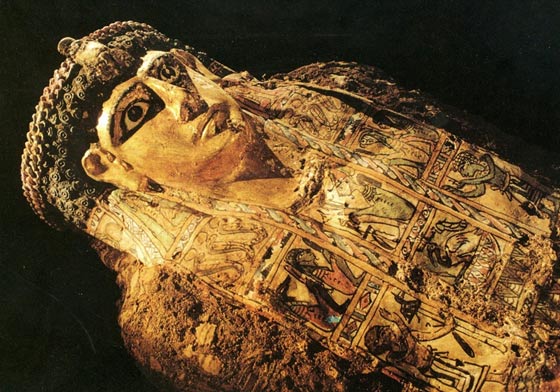The Valley of the Golden Mummies is a Greco-Roman necropolis, located about 6 km from El-Bawiti, the capital of El Bahariya Oasis, in the Western Desert. Discovered by Ashry Shaker in 1996, the valley is considered the most spectacular discovery since the finding of the Tomb of Tutankhamun. Dr Zahi Hawass, the director of the excavation project, estimates that the necropolis, with about 6 km2, may contain more than 10,000 mummies. The cemetery, which is thought to cover an area of around 6 square km, has been estimated by Dr Hawass to contain over 10,000 mummies. The Roman population of Bahariya were laid in rows in multi-chambered family tombs, left undisturbed by robbers, their burials still intact. Some of the mummies were encased in gilded or painted coffins; and some others wore golden masks and jewelry and were surrounded by their burial goods of wine jars, coins, pottery and amulets for use in the afterlife. More than 230 mummies, golden masks, coffins, wooden panels, stelae, papyri were found in niches in the cemetery's tombs. The coffins and the masks have various different styles: some lack decoration; others have a gilded face mask decorated with religious scenes; others were cartonnage coffins painted with bright funerary scenes; and some mummies were simple wrapped in linen. Under the linen, mummies have sticks in both sides in order to maintain rigidity.

Tomb of Pedashtar
It is located in the necropolis of Qarat el-Subi, near the city of El Bawiti, in the Bahariya Oasis. Dating back to the Twenty-sixth Dynasty, the
